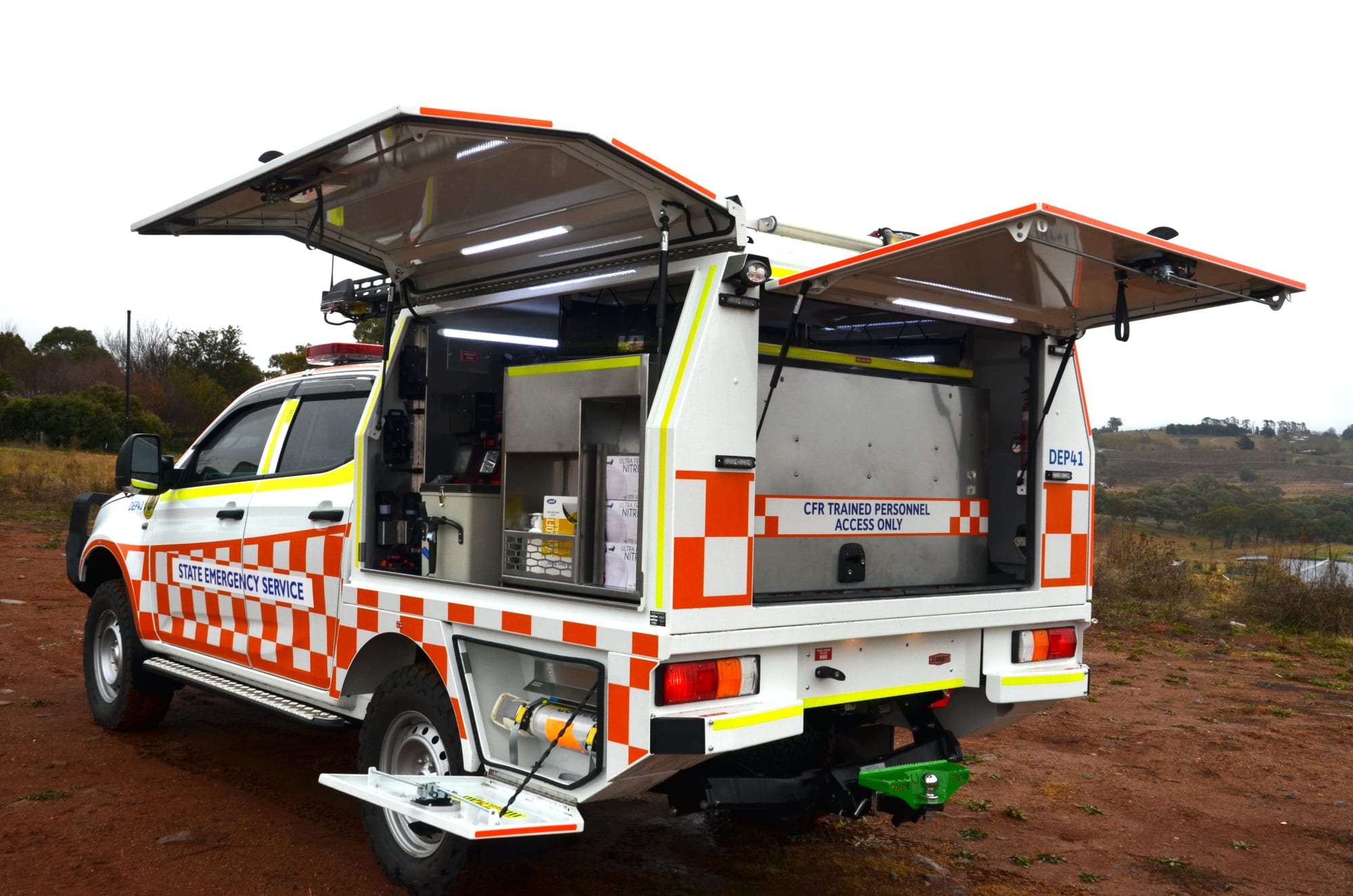Invest
Government announces overhaul of JobKeeper and JobSeeker programs
The Morrison government will extend JobKeeper and JobSeeker beyond September, but eligibility will change as the government looks to reign in some of its spending, a Treasury update has revealed.
Government announces overhaul of JobKeeper and JobSeeker programs
The Morrison government will extend JobKeeper and JobSeeker beyond September, but eligibility will change as the government looks to reign in some of its spending, a Treasury update has revealed.

The overhaul was revealed on Tuesday, 21 July, prior to full details being released by Prime Minister Scott Morrison and Treasurer Josh Frydenberg in an economic update on 23 July.
“JobKeeper has been an economic lifeline to millions of Australians and that lifeline will be extended for those businesses that need it most,” Mr Frydenberg said.
Prime Minister Scott Morrison and Treasurer Josh Frydenberg have announced that the current $1,500 per fortnight JobKeeper payment will be reduced to $1,200 per fortnight from 28 September, and $750 per fortnight for employees working less than 20 hours a week.
From 4 January, the rate will again fall to $1,000 per fortnight, and $650 for people working less than 20 hours a week.

The program will run to 28 March 2021, at a further cost of $16 billion, taking the entire JobKeeper program to $86 billion.
The changes to JobKeeper include two payment tiers to help align wages closer to pre-COVID incomes and a rebalancing of the $550 a week JobSeeker program.
“The review of JobKeeper found that the program has been well targeted to those businesses that suffered an average decline in turnover in April of 37 per cent compared to the same month last year,” Finance Minister Mathias Cormann said.
“What the review also found was that there were a number of features of JobKeeper that created adverse incentives which may become more pronounced over time as the economy recovers. This formed part of our considerations as we looked at the next phase of the JobKeeper program.”
Changing rates
The Treasury’s update revealed that one in four of the 3.5 million Australians on the JobKeeper program is currently benefiting from higher wages.
A quarter of those Australians with higher salaries are earning $550 more than they were before the COVID-19 shutdown.
It is understood that the government will adopt two payment tiers to more closely reflect the incomes of those who previously worked fewer hours.
“JobKeeper was designed to prioritise macro-economic support and speed and ease of implementation,” the Treasury said.
“However, JobKeeper has a number of features that create adverse incentives which may become more pronounced over time as the economy recovers.
“It distorts wage relativities between lower and higher-paid jobs, it dampens incentives to work, it hampers labour mobility and the reallocation of workers to more productive roles, and it keeps businesses afloat that would not be viable without ongoing support.”
About the author

About the author


Economy
Rising CPI reinforces RBA’s stance as rate cut expectations remain: State Street
State Street Global Advisors says the Reserve Bank of Australia (RBA) is likely to hold its current policy outlook following the release of September quarter inflation data, which showed an unexpected ...Read more

Economy
NSW SES boosts tsunami preparedness ahead of World Tsunami Awareness Day
As World Tsunami Awareness Day approaches on 5 November, the New South Wales State Emergency Service (NSW SES) is ramping up efforts to enhance tsunami preparedness along the east coastRead more

Economy
Lifesaving Regional Response Strengthened with New NSW SES Vehicles
In a significant boost to regional emergency services, the NSW State Emergency Service (SES) has unveiled 11 new Community First Response (CFR) vehicles, designed to enhance the speed and safety of ...Read more

Economy
Australia's June quarter GDP growth driven by consumer and government spending
Australia's economy has shown unexpected resilience in the June 2025 quarter, with household and government consumption driving growth despite a significant decline in public investmentRead more

Economy
Australia's GDP surprise is real but operators should heed the growth mix warning light
Australia’s June-quarter growth beat expectations on the strength of household consumption and government spending, even as public investment sagged. The upside surprise signals resilience, but the ...Read more

Economy
Households carried the quarter: what Australia’s upside GDP surprise means for strategy now
Australia’s economy expanded faster than expected in the June 2025 quarter, with GDP up 0.6 per cent quarter-on-quarter and 1.8 per cent year-on-year — the strongest pace in two years. The kicker ...Read more

Economy
Inflation dynamics in Australia: Electricity subsidies and labour market in focus
In a recent economic analysis, experts from State Street have highlighted significant developments in Australia's inflation landscape, attributing the changes primarily to the withdrawal of ...Read more

Economy
Australia's economic growth driven by consumer and government spending: A closer look at the June quarter
Australia's economy has delivered a surprising performance for the June 2025 quarter, surpassing expectations with a growth rate of 0.6% quarter-on-quarter and 1.8% year-on-year. This unexpected ...Read more

Economy
Rising CPI reinforces RBA’s stance as rate cut expectations remain: State Street
State Street Global Advisors says the Reserve Bank of Australia (RBA) is likely to hold its current policy outlook following the release of September quarter inflation data, which showed an unexpected ...Read more

Economy
NSW SES boosts tsunami preparedness ahead of World Tsunami Awareness Day
As World Tsunami Awareness Day approaches on 5 November, the New South Wales State Emergency Service (NSW SES) is ramping up efforts to enhance tsunami preparedness along the east coastRead more

Economy
Lifesaving Regional Response Strengthened with New NSW SES Vehicles
In a significant boost to regional emergency services, the NSW State Emergency Service (SES) has unveiled 11 new Community First Response (CFR) vehicles, designed to enhance the speed and safety of ...Read more

Economy
Australia's June quarter GDP growth driven by consumer and government spending
Australia's economy has shown unexpected resilience in the June 2025 quarter, with household and government consumption driving growth despite a significant decline in public investmentRead more

Economy
Australia's GDP surprise is real but operators should heed the growth mix warning light
Australia’s June-quarter growth beat expectations on the strength of household consumption and government spending, even as public investment sagged. The upside surprise signals resilience, but the ...Read more

Economy
Households carried the quarter: what Australia’s upside GDP surprise means for strategy now
Australia’s economy expanded faster than expected in the June 2025 quarter, with GDP up 0.6 per cent quarter-on-quarter and 1.8 per cent year-on-year — the strongest pace in two years. The kicker ...Read more

Economy
Inflation dynamics in Australia: Electricity subsidies and labour market in focus
In a recent economic analysis, experts from State Street have highlighted significant developments in Australia's inflation landscape, attributing the changes primarily to the withdrawal of ...Read more

Economy
Australia's economic growth driven by consumer and government spending: A closer look at the June quarter
Australia's economy has delivered a surprising performance for the June 2025 quarter, surpassing expectations with a growth rate of 0.6% quarter-on-quarter and 1.8% year-on-year. This unexpected ...Read more








